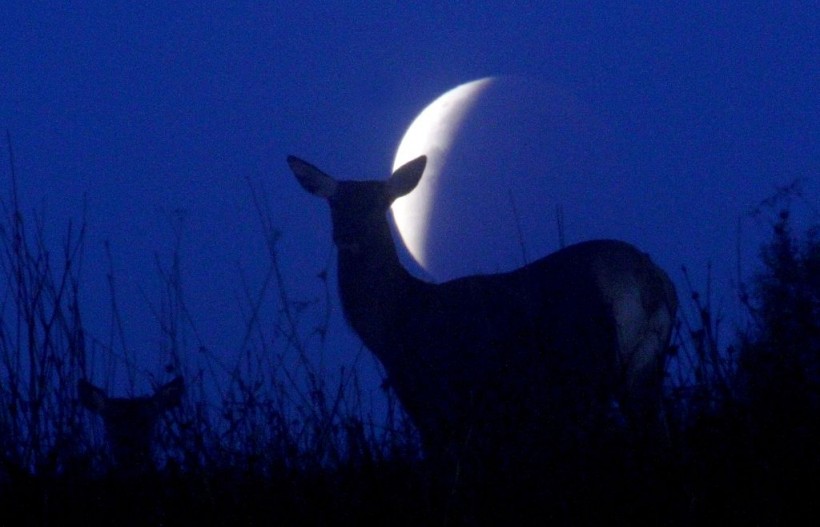Here are the biggest astronomical events to jot down on your April 2022 calendar, from the return of shooting stars to the conjunction of planets!

Reindeer are seen silhouetted against the moon during a lunar eclipse near the village of Yavterishki, some 250 kilometers north from Minsk on September 28, 2015. The combination of a supermoon and total lunar eclipse last occurred in 1982 and will not happen again until 2033.
Mars-Saturn conjunction Conjunction - April 4 to 5, 2022
Venus, Mars, and Saturn gathered in the early morning sky towards the end of March, and the spectacle will last through the first full week of April.
Science Times recently reported that Mars and Saturn will seem exceptionally near to each other on the mornings of Monday, April 4 and Tuesday, April 5, roughly an hour before daybreak, local time, before the trio drifts apart.
The two will be visible to the right of Venus, which is the brightest object in the early sky just before sunrise.
Full Moon - April 16
The next full moon will be on Saturday, April 16 at 2:55 p.m. (1855 GMT), however, the moon will seem full to the casual stargazer the night before and following its peak.
Space.com said the Full Pink Moon is the name given to the full moon in April.
Meteor Shower - April 22
Meteor showers are one of the most famous astronomical occurrences. After a long time without one, stargazers will finally have their opportunity towards the end of the month.
Inverse said the Lyrid meteor shower would peak on Thursday night, April 21, and early Friday morning, April 22. It's a regular shower, with 15 to 20 meteors per hour. Still, it attracts special attention because it's the first of its sort since the Quadrantid meteor shower, which peaked on Jan. 2.
ALSO READ: Meteor Fireball Eeriely Shocks Indiana Skies With Loud Explosion [LOOK]
Before the moon rises, the ideal time to observe the Lyrids this year will be between midnight and 2 a.m. local time. When the moon rises over the horizon, its brightness will make it difficult to see some of the Lyrids' fainter meteors.
The Eta Aquarid meteor shower will peak just two weeks after the Lyrids, offering people another chance to see some shooting stars.
Blue Moon - April 30
Many astronomical events involving the moon are visible in the sky. Still, an unusual lunar occurrence will go unreported on the final day of April.
The phrase "blue moon" has come to refer to the second full moon in a calendar month. Its counterpart, or the second new moon in a calendar month, will occur at the end of April. Almanac called this a "black moon."
The part of the moonlighted by the sun is pointed away from the Earth during a new moon, making Earth's celestial companion invisible.
A black moon was last seen in July of this year, and it won't happen again until December of 2024.
Bonus: Solar Eclipse - April 8, 2024
Millions of people from Oregon to South Carolina saw day turn to darkness on Aug. 21, 2017, as the sun, moon, and Earth coincided to create a complete solar eclipse.
National Parks Traveler said individuals across the contiguous United States will once again be able to stand in the moon's shadow during a stunning complete solar eclipse on April 8, 2024.
The path of totality, which includes major cities such as Dallas, Indianapolis, Cleveland, and Montreal, will be visible during the total eclipse.
RELATED ARTICLE: Skywatching Events of 2022: Mark Your Calendars for a Supermoon, Solar Eclipse and More Celestial Shows Next Year!
Check out more news and information on Space in Science Times.














